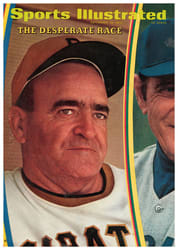
HE SHRINKS BIG BUILDINGS TO SIZE
The thing that makes Harry Bates different is his approach: he is a former skyscraper builder who now designs sport houses. Bates brings to a one-family, two-story beach house the same lessons he learned while working as a young architect in the New York offices of Skid-more Owings & Merrill, those big-scale builders of skyscrapers. He joined the architectural firm in 1955, fresh from North Carolina State University, and worked on the plans for three original and striking New York City structures—the Chase Manhattan Bank in Wall Street and the Pepsi-Cola and Union Carbide Buildings on Park Avenue.
"The 10 years I spent with Skidmore taught me discipline," he says. "What was really exciting was that in the last couple of years I was there the firm began to discard and pare down. Lots of superfluous detail disappeared from their plans, frills were gone and they began to cut through to the design essentials."
Spurred by that theme. Bates began to do the same sort of thing when he opened his own office in the city. He built a vacation house for himself, using the cheapest, roughest materials available at the time. Cypress was then the least expensive wood and—although it has risen in cost since the first Bates beach house—he still likes to use it for its roughhewn, sturdy quality.
But Bates started to feel boxed in, that his designs were becoming too symmetrical—a throwback to his early Skidmore days. "My first real break with tradition came with the house I designed for Dorothy Levy," says the architect. (This is the Fire Island beach house on page 42.) Approaching the new job, he found that half the Levy property had been washed away by a hurricane and that a swimming pool took up a large slice of what was left. Sizing up the remaining small piece of land, Bates designed a three-bedroom house, 18 feet by 38 feet, but he hung onto the plans for 10 days before showing them to Mrs. Levy, "because they were so completely different from anything I had ever done before.
"But she loved it," Bates recalls. "And it made me think that my new approach was right after all. I owe her a lot."
Eighteen months and six houses later Bates built the house on page 43. "This was a house for very contemporary people," he says. "The Elliot Regens love Long Island and such things as duck shooting. I knew exactly the kind of place they needed." For Dr. Jeff Davis and his wife Virginia, who spend most of their leisure time sailing, he designed a cool cedar house on a large piece of ocean property on Fire Island (page 44). "Harry is ready to adapt his plans to your personal needs," says Virginia Davis. "If they're not what you want he'll change them, and the result will still be marvelous and it will still be his."
All the Bates beach houses are clearly his work. "In the final analysis this is Harry's house," says Barry Schilit, whose Fire Island house (page 45) is practically next door to the Davises.
Bates houses require a minimum of maintenance. Everything works: doors are solid, windows fit and there are no drafts. Outside showers keep sand out of the house, and, if it does get tracked in, it doesn't show on the bleached floors. There is plenty of storage space and a lot of built-ins so that nobody needs to drag out all sorts of furniture from town. A Bates house is not ruinously expensive, either. All these houses cost less than $27 a square foot, the first two less than $20.
PHOTO
Harry Bates surveys one of his designs.

